
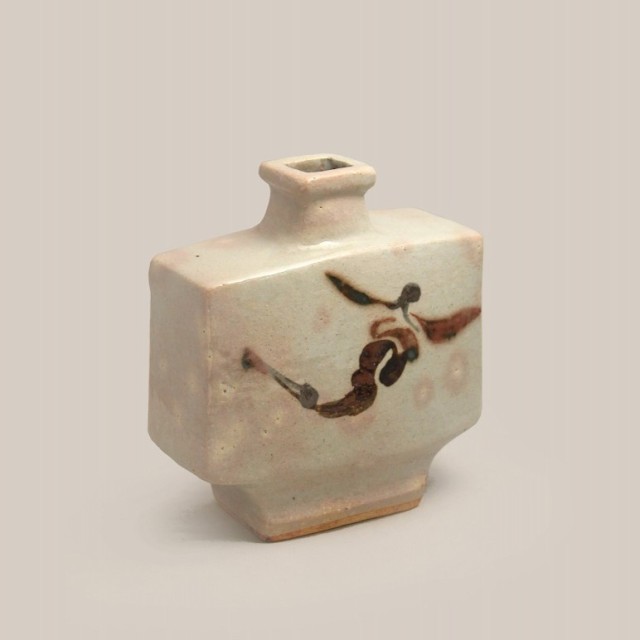
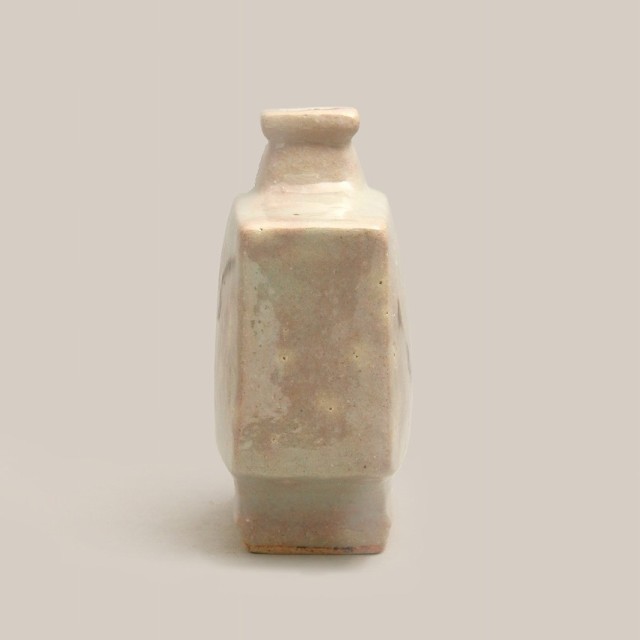
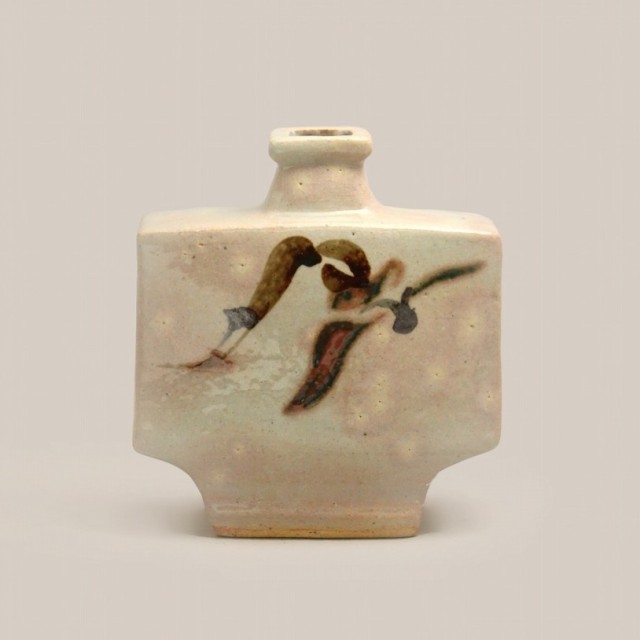
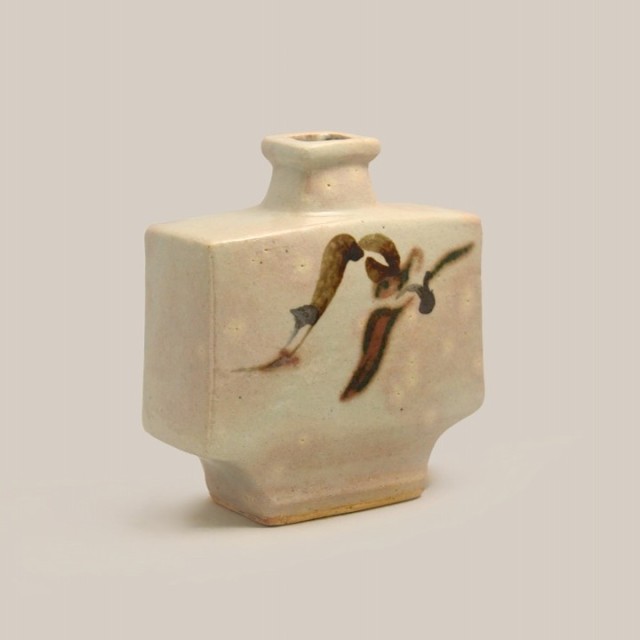
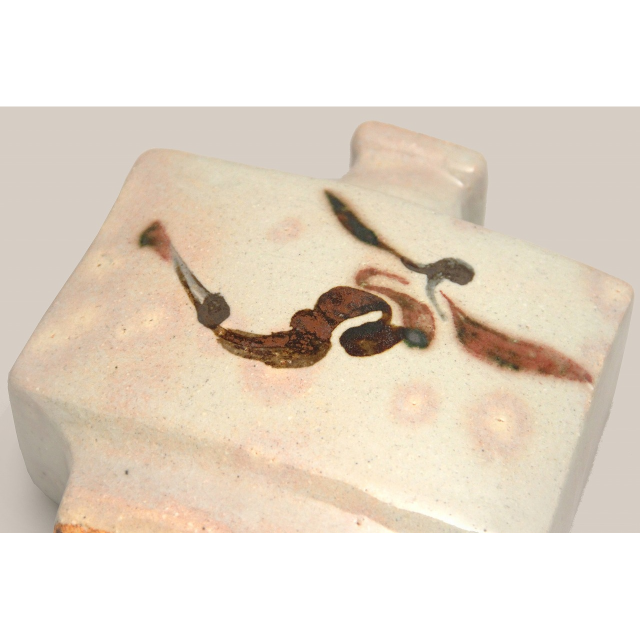
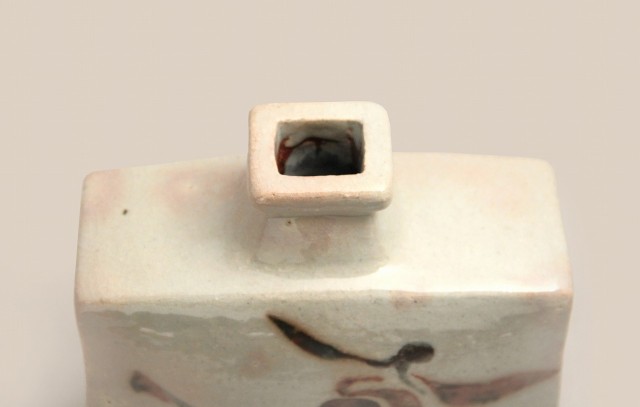

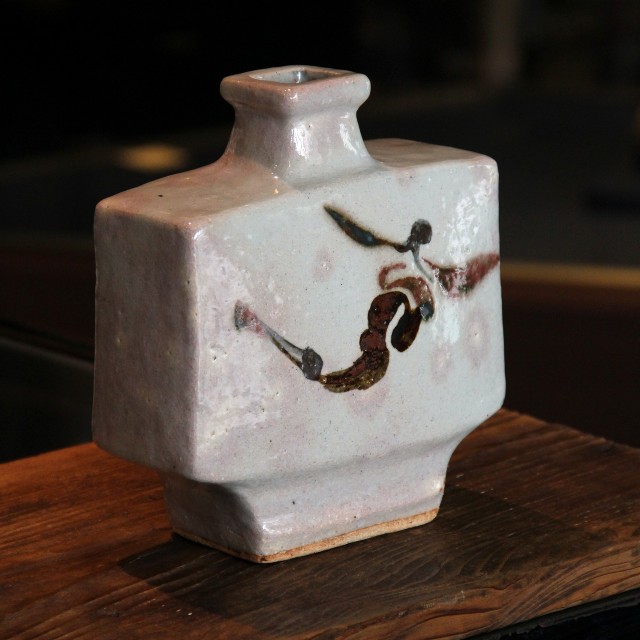

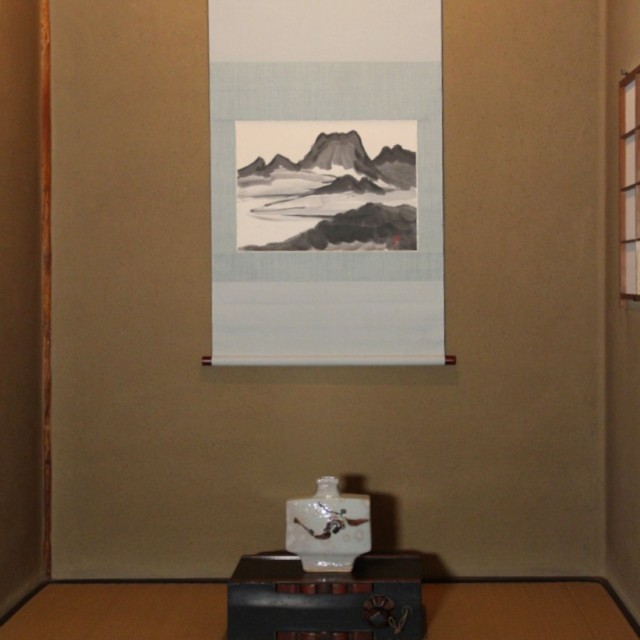
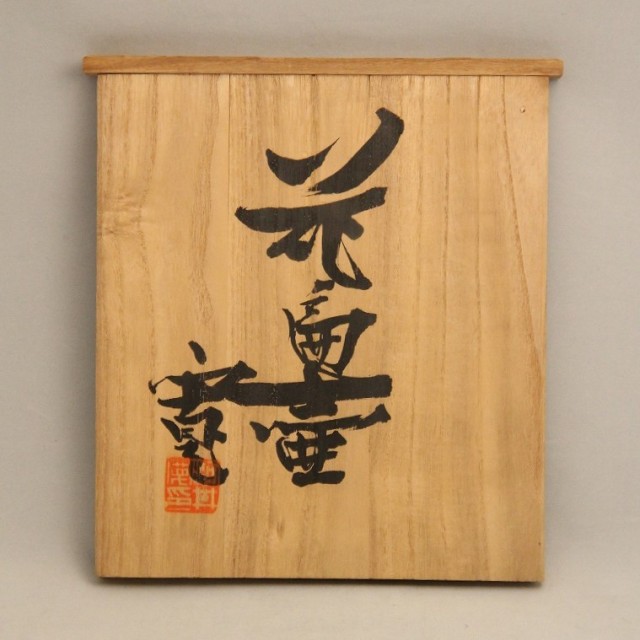
Showa Period
With Original Box
D9.5cm×19cm H21cm
This is a work by Kawai Kanjiro, a potter who played a central role in the Mingei movement during the Taisho and Showa periods. Kawai Kanjiro was one of the central figures of the Mingei movement, and produced many ceramic works that incorporated his unique aesthetic sense and techniques.
This piece has a unique flat form, known as a flat jar, and stands out for its refined formative beauty. The soft white glaze with faint red flecks covers the entire piece, creating an elegant texture. The surface is decorated with a flowing floral pattern. It looks like a flying heavenly maiden. The flowing brush strokes show Kawai's outstanding decorative technique.
The texture of the glaze and the brush strokes express the warmth and spirituality characteristic of Kawai Kanjiro.
This hana-bon jar can be enjoyed not only as an ornamental piece, but also as a vase for flowers. It is a timeless piece that blends traditional Japanese beauty with a modern sensibility.
Kanjiro KAWAI
1890 - 1966
Kanjirou Kawai was a Kyoto-based potter within the folk tradition of Japanese and Korean ceramics and a key figure in Mingei (Japanese folk art movement). He was a long-time friend of Shōji Hamada, Soetsu Yanagi, and Bernard Leach with whom he co-founded the Japan Folk Art Association in 1926. He refused all official honors, such as the designation of “Living National Treasures,” He often decorated his works with bold, semiabstract blossom motifs, which he painted freely in under-glaze cobalt blue, iron brown, and copper red.
Contact about the Item
